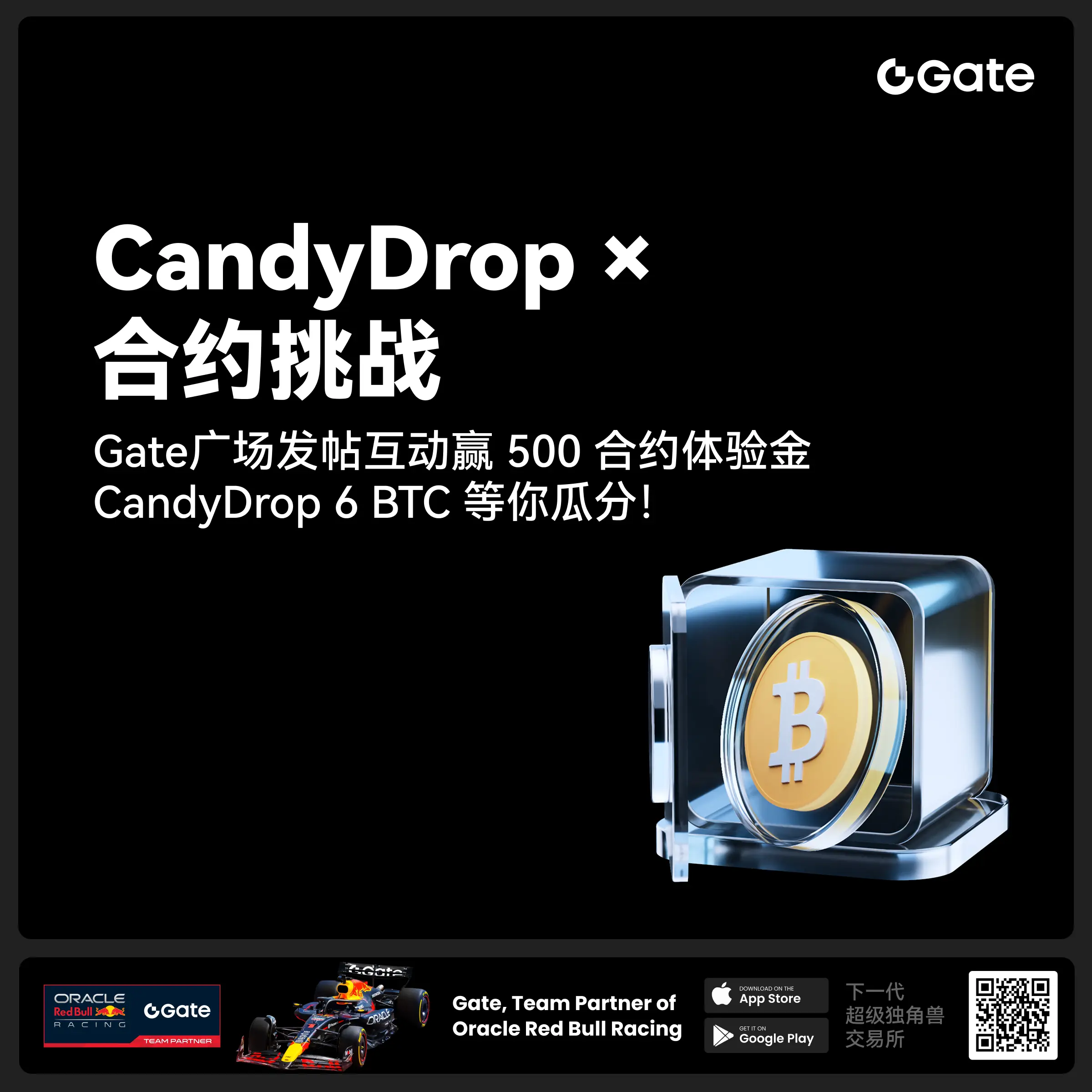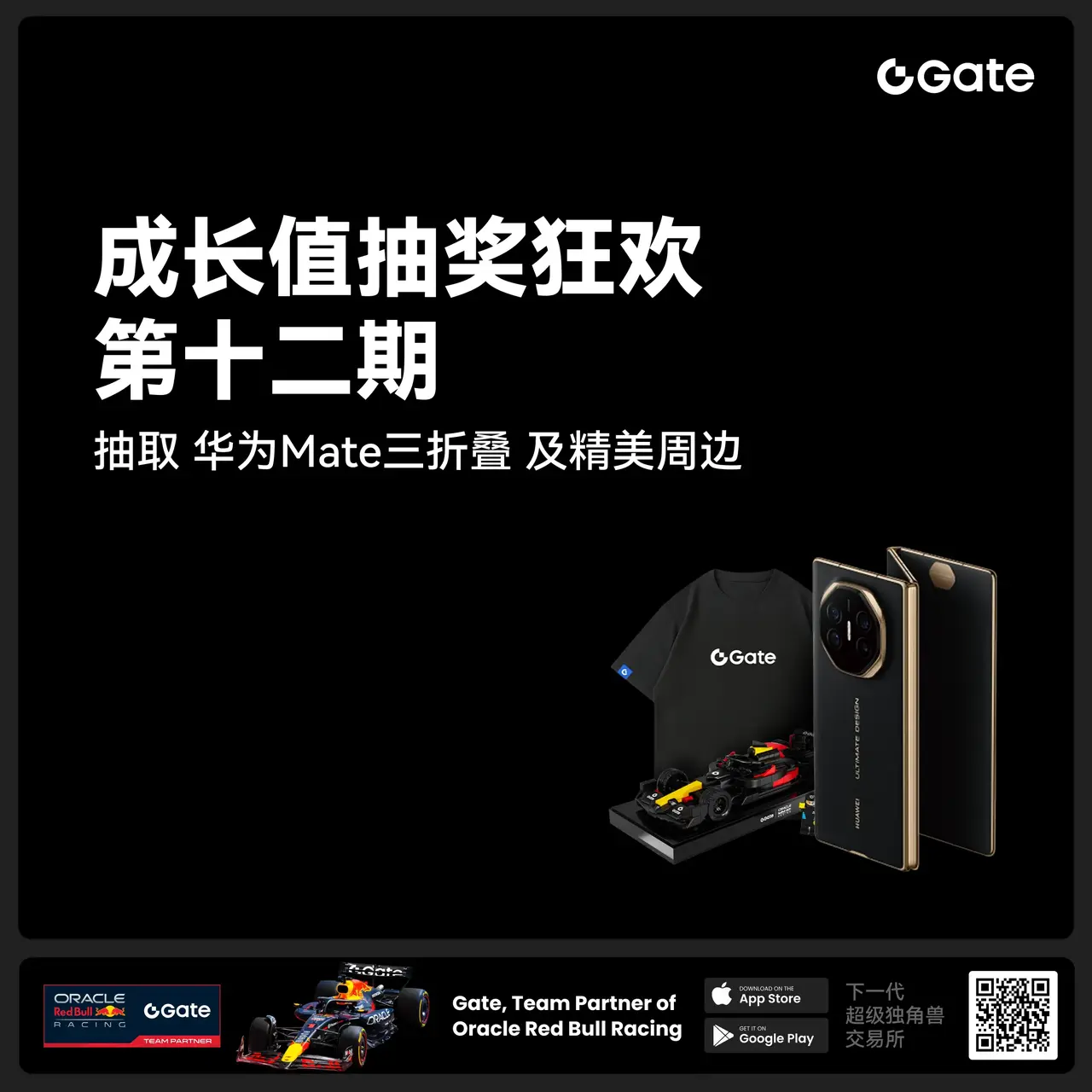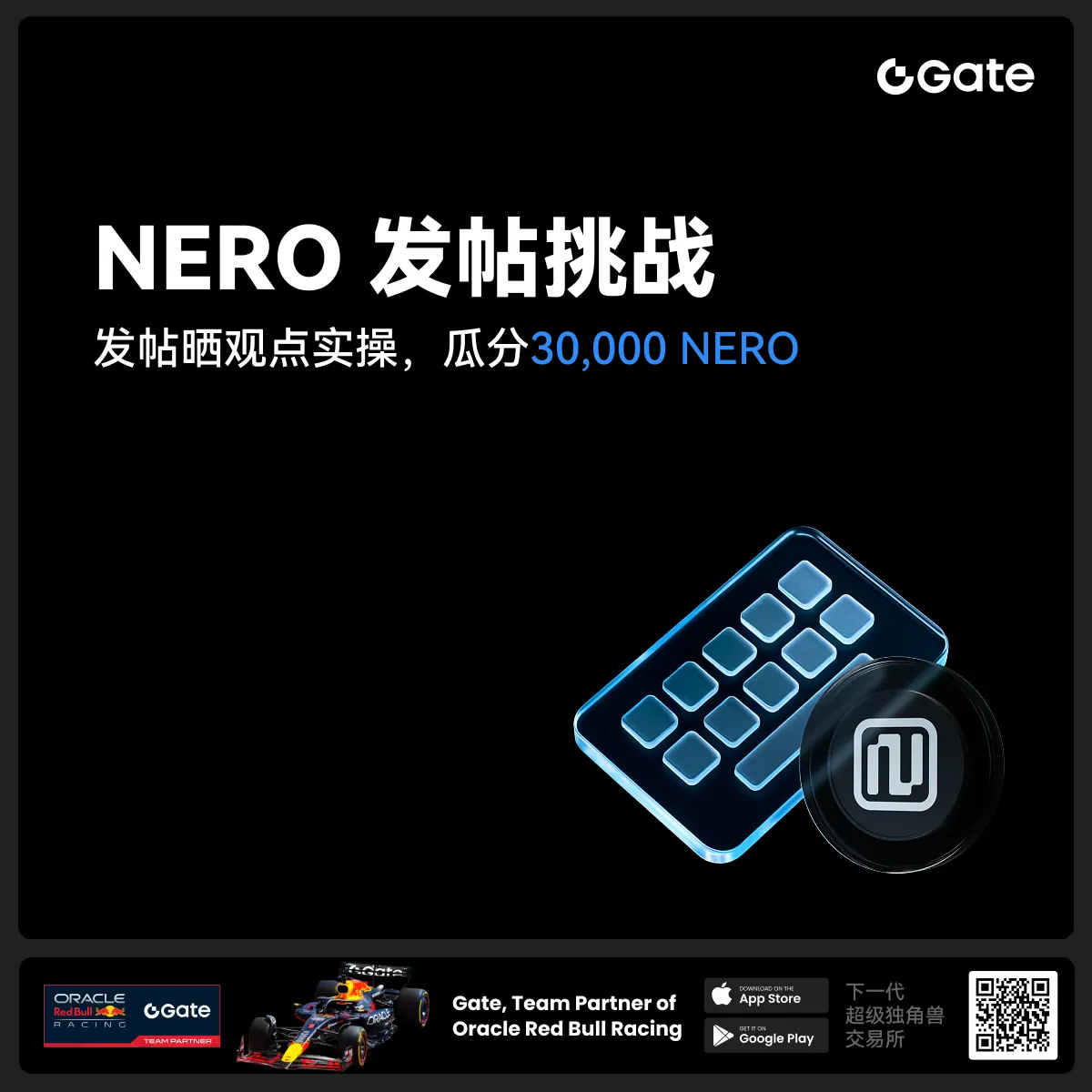- 話題1/3
7340 熱度
1951 熱度
24115 熱度
6636 熱度
20365 熱度
- 置頂
- 🎉 #CandyDrop合约挑战# 正式開啓!參與即可瓜分 6 BTC 豪華獎池!
📢 在 Gate 廣場帶話題發布你的合約體驗
🎁 優質貼文用戶瓜分$500 合約體驗金券,20位名額等你上榜!
📅 活動時間:2025 年 8 月 1 日 15:00 - 8 月 15 日 19:00 (UTC+8)
👉 活動連結:https://www.gate.com/candy-drop/detail/BTC-98
敢合約,敢盈利
- 🎉 攢成長值,抽華爲Mate三折疊!廣場第 1️⃣ 2️⃣ 期夏季成長值抽獎大狂歡開啓!
總獎池超 $10,000+,華爲Mate三折疊手機、F1紅牛賽車模型、Gate限量週邊、熱門代幣等你來抽!
立即抽獎 👉 https://www.gate.com/activities/pointprize?now_period=12
如何快速賺成長值?
1️⃣ 進入【廣場】,點擊頭像旁標識進入【社區中心】
2️⃣ 完成發帖、評論、點讚、發言等日常任務,成長值拿不停
100%有獎,抽到賺到,大獎等你抱走,趕緊試試手氣!
截止於 8月9日 24:00 (UTC+8)
詳情: https://www.gate.com/announcements/article/46384
#成长值抽奖12期开启#
- 📢 Gate廣場 #NERO发帖挑战# 秀觀點贏大獎活動火熱開啓!
Gate NERO生態周來襲!發帖秀出NERO項目洞察和活動實用攻略,瓜分30,000NERO!
💰️ 15位優質發帖用戶 * 2,000枚NERO每人
如何參與:
1️⃣ 調研NERO項目
對NERO的基本面、社區治理、發展目標、代幣經濟模型等方面進行研究,分享你對項目的深度研究。
2️⃣ 參與並分享真實體驗
參與NERO生態周相關活動,並曬出你的參與截圖、收益圖或實用教程。可以是收益展示、簡明易懂的新手攻略、小竅門,也可以是行情點位分析,內容詳實優先。
3️⃣ 鼓勵帶新互動
如果你的帖子吸引到他人參與活動,或者有好友評論“已參與/已交易”,將大幅提升你的獲獎概率!
NERO熱門活動(帖文需附以下活動連結):
NERO Chain (NERO) 生態周:Gate 已上線 NERO 現貨交易,爲回饋平台用戶,HODLer Airdrop、Launchpool、CandyDrop、餘幣寶已上線 NERO,邀您體驗。參與攻略見公告:https://www.gate.com/announcements/article/46284
高質量帖子Tips:
教程越詳細、圖片越直觀、互動量越高,獲獎幾率越大!
市場見解獨到、真實參與經歷、有帶新互動者,評選將優先考慮。
帖子需原創,字數不少於250字,且需獲得至少3條有效互動
- 🎉 親愛的廣場小夥伴們,福利不停,精彩不斷!目前廣場上這些熱門發帖贏獎活動火熱進行中,發帖越多,獎勵越多,快來GET你的專屬好禮吧!🚀
1️⃣ #GateLaunchpad上线IKA# |IKA認購體驗
在Gate廣場帶話題曬出你的IKA Launchpad認購體驗,4位幸運分享者講瓜分$200分享獎池!
詳情 👉️ https://www.gate.com/post/status/12566958
2️⃣ #ETH冲击4800# |行情分析預測
大膽發帖預測ETH走勢,展示你的市場洞察力!10位幸運用戶將平分0.1 ETH 獎勵!
詳情 👉️ https://www.gate.com/post/status/12322403
3️⃣ #创作者活动第二期# |ZKWASM話題
在廣場或推特發布與 ZKWASM 或其交易活動相關的原創內容,瓜分4,000枚ZKWASM!
詳情 👉️ https://www.gate.com/post/status/12525794
4️⃣ #Gate广场征文活动第二期# |ERA話題
談談你對ERA的觀點/體驗,參與並推廣活動,700 ERA大獎等你贏!
詳情 👉️ https://www.gate.com/post/status/12361653
5️⃣ #MBG任务挑战# |MBG話題
分享你對MBG的洞察,積極參與和推廣MBG活動,20位小 - 🎉Gate 2025 上半年社區盛典:內容達人評選投票火熱進行中 🎉
🏆 誰將成爲前十位 #Gate广场# 內容達人?
投票現已開啓,選出你的心頭好
🎁贏取 iPhone 16 Pro Max、限量週邊等好禮!
📅投票截止:8 月 15 日 10:00(UTC+8)
立即投票: https://www.gate.com/activities/community-vote
活動詳情: https://www.gate.com/announcements/article/45974
Sei空投事件全解析:從測試網爭議到150萬用戶大規模空投
Sei空投風波:從備受期待到爭議不斷
Sei的空投一波三折,從最初的廣受期待到後來的爭議不斷。作爲一個備受關注的項目,Sei曾因其不菲的融資規模和激勵測試網空投計劃而吸引了大量用戶參與。官方數據顯示,測試網單日請求量曾高達千萬級。
然而,當Sei官方提出用戶實名認證的要求時,引發了全網譁然。盡管一些平台已在實行實名制,但公鏈要求實名仍讓人感到震驚,社區嘲諷聲四起。迫於輿論壓力,Sei最終否認了這一要求。
社區情緒平復後,對Sei的期待也隨之減弱。但出人意料的是,Sei成爲了某交易平台的launchpool項目,再次激起了社區對其空投的期待。
然而,在宣布上線launchpool後,Sei遲遲未公布空投細節,直到代幣二級市場交易開始後一天才發布相關信息,這一舉動引發了社區不滿。本文將解讀Sei的空投規則、覆蓋用戶羣體,以及其中的風波。
空投規則:驚喜與失望並存
測試網參與者失望而歸
空投規則公布後,由於涉及兩類用戶羣體且缺乏具體限定,加上領取界面尚未完善,社區更加困惑。Sei官方被迫關閉多個社區頻道,僅保留少數重要頻道。
根據官方公布的信息,空投對象分爲兩類:激勵測試網參與者和6大公鏈活躍用戶。在700萬參與測試網的地址中,最大的單人控制集羣達3萬個地址。此外,大量重復社交帳號和繞過前端規則的機器人地址也被排除在外。
合格地址中,完成所有測試網任務的用戶獲得了最多獎勵,而完成較少任務的地址僅獲得少量用於支付交互費用的代幣。然而,當用戶查詢空投數額時,普遍感到失望。完成所有任務的用戶也僅獲得約60枚SEI代幣。
同時,用戶可選擇完成發推任務(獲得20多枚SEI)或跨橋任務(獲得200-400枚SEI),但這兩個任務只能二選一。由於官方指引不清,許多用戶誤以爲自己沒有跨橋任務資格,選擇了發推任務,導致空投數量大幅減少。
這樣的空投設計讓測試網參與者倍感失落,尤其是與非參與用戶相比,後者獲得的空投數額可能是他們的數十倍甚至數百倍。
大規模空投引發全網熱議
除了針對測試網用戶的空投,Sei還重點面向6條主流公鏈的活躍地址進行空投。官方表示,他們的空投將覆蓋Web3生態的各個角落。
隨後,Sei基金會宣布將合格錢包數量從50萬增加到150萬,涵蓋多個主流區塊鏈的活躍用戶。根據社區反饋,這裏的活躍用戶更可能指2023年頻繁跨鏈的地址。領取規則要求將資產跨鏈到Sei網路。
起初,社區對Sei的關注度已經降低。但當有人傳出符合資格的地址跨鏈後可獲得5000個SEI代幣時,引發了廣泛關注。社交媒體上不斷有用戶曬出領取到5000甚至10000多枚SEI的截圖,激發了更多人嘗試。這一熱潮導致某些交易所的ATOM、OSMO等代幣被借貸一空,OSMO短時漲幅達20%。
然而,並非所有符合資格的地址都能獲得5000枚SEI。用戶可以通過增加跨鏈資產數額來提高獲得高額空投的概率。根據社區反饋,跨鏈500美元可能獲得20-200枚SEI,1萬美元可能獲得500-5000枚,10萬美元可能獲得500-13000枚。
由於許多用戶擁有多個符合資格的地址,但資金有限或不願承擔風險,衍生出了代領服務。一方提供跨橋資金,一方提供符合資格的地址,按約定比例分成領取的SEI。目前,提供資金方的分成比例已從20%降至10%。參與此類合作需提高安全意識,防止資產損失,尤其要警惕需要提供私鑰的要求。
總結
Sei的空投設計最終獲得了廣泛關注,吸引了全網目光,並在某種程度上兼顧了各方利益。
對於測試網參與者,雖然空投數量不如預期,但他們也可能從針對主流區塊鏈活躍地址的空投中受益,部分緩解了不滿情緒。
對於此前不了解Sei的用戶,這次空投無疑是意外之喜。只要做好資產管理和安全防護,就可以低風險參與其中。
從Sei官方角度看,這種空投方式帶來了巨大的宣傳效應,同時可能爲團隊自身提供了某些優勢。此外,用戶將資產轉移到Sei網路,不僅提升了網路的資產規模,也爲未來生態項目的發展奠定了基礎。
目前,Sei的空投仍在進行中,繼續引發廣泛討論和參與。